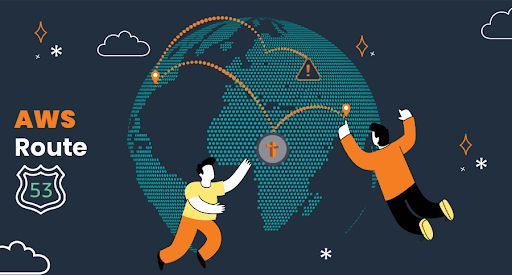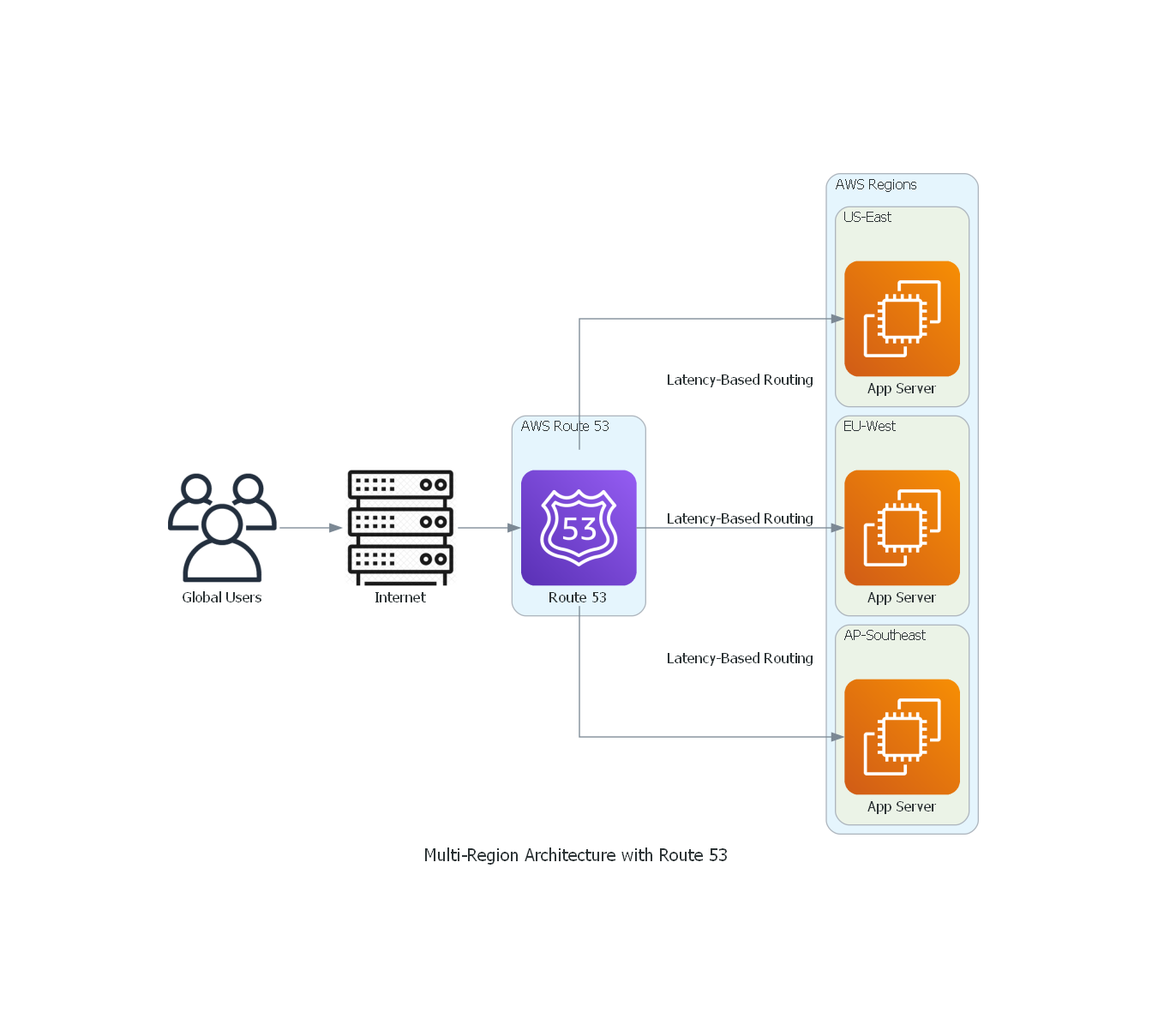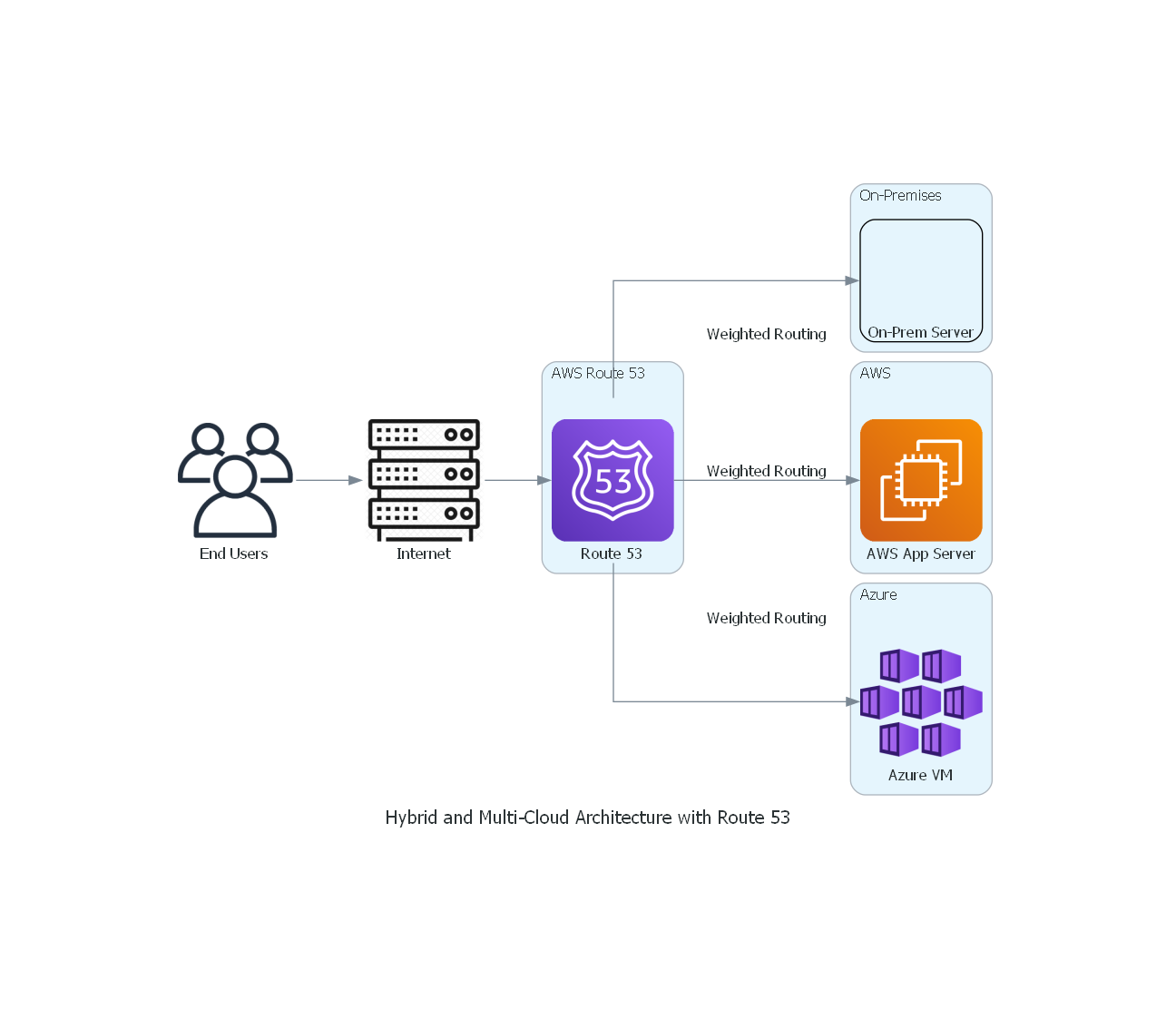Using Route 53 for Multi-Region and Multi-Cloud Architectures
 Hashir Ahmad
Hashir Ahmad
In today's increasingly interconnected world, businesses are no longer confined to a single region or cloud provider. They are deploying applications across multiple regions and even across different cloud environments to ensure high availability, low latency, and improved disaster recovery capabilities. AWS Route 53, Amazon's scalable Domain Name System (DNS) service, is a powerful tool that can help you design and manage these complex architectures. In this blog, we’ll explore how to use Route 53 for multi-region and multi-cloud architectures, and we’ll discuss best practices and real-world case studies.
Designing Multi-Region Architectures with Route 53
Multi-region architectures are designed to distribute your application across different geographic regions. This approach enhances fault tolerance, reduces latency for global users, and provides a robust disaster recovery solution.

Key Concepts:
Latency-Based Routing:
- Route 53 can route traffic to the region that provides the lowest latency for the end-user. This ensures that users around the globe experience the fastest possible response times.
Geolocation Routing:
- With geolocation routing, you can direct traffic based on the geographic location of your users. This allows you to serve localized content or comply with regional regulations.
Failover Routing:
- In a multi-region setup, failover routing can automatically redirect traffic to a healthy region if the primary region becomes unavailable.
Example: Global E-Commerce Platform
Imagine you're running an e-commerce platform with users from North America, Europe, and Asia. To provide the best user experience, you deploy your application in three AWS regions: North America (us-east-1), Europe (eu-west-1), and Asia (ap-southeast-1).
Latency-Based Routing ensures that users in North America are served by the us-east-1 region, European users by the eu-west-1 region, and Asian users by the ap-southeast-1 region.
Geolocation Routing allows you to offer region-specific promotions or products.
Failover Routing provides a backup in case any of these regions experience downtime, automatically routing users to the nearest available region.
Route 53 for Hybrid and Multi-Cloud Environments
Hybrid and multi-cloud architectures involve running workloads across on-premises data centers, AWS, and other cloud providers like Azure or Google Cloud. Route 53 can seamlessly integrate with these environments, providing a unified DNS service that spans across all platforms.

Key Features:
Weighted Routing:
- Weighted routing allows you to distribute traffic between different environments (e.g., on-premises, AWS, and other clouds) based on specified weights. This is particularly useful for gradual migration or load distribution.
Multi-Value Answer Routing:
- Route 53 can return multiple IP addresses in response to DNS queries, allowing you to direct traffic to multiple environments. This improves redundancy and load balancing.
Private DNS for Hybrid Environments:
- Using Route 53 Resolver, you can create a private DNS namespace that integrates with your on-premises DNS systems. This allows for seamless DNS resolution across both on-premises and cloud environments.
Example: Hybrid Cloud Financial Services
Consider a financial services company that maintains sensitive data on-premises for security reasons but leverages AWS and Azure for cloud-based analytics and processing.
Weighted Routing can direct a portion of analytics traffic to AWS and another portion to Azure, based on their specific capabilities or cost considerations.
Multi-Value Answer Routing provides redundancy by routing client requests to both on-premises and cloud-based resources.
Private DNS ensures that internal services can resolve DNS queries across the hybrid environment without exposing sensitive data to the public internet.
Best Practices and Case Studies
To maximize the effectiveness of Route 53 in multi-region and multi-cloud architectures, consider the following best practices:
Monitor Health and Performance:
- Regularly monitor the health and performance of your regions and environments using Route 53 health checks. This allows you to proactively address issues before they impact users.
Automate Failover and Recovery:
- Use Route 53's failover routing and health checks to automate disaster recovery processes. Regularly test failover scenarios to ensure that they work as expected.
Optimize Cost and Performance:
- Use weighted and latency-based routing to optimize the balance between cost and performance. For example, you can direct more traffic to a lower-cost region during non-peak hours.
Document and Review Configurations:
- Keep detailed documentation of your DNS configurations and review them periodically. This ensures that your setup remains aligned with your business objectives and technical requirements.
Case Study: Multi-Cloud SaaS Provider
A SaaS provider offering collaboration tools across multiple clouds (AWS and Google Cloud) implemented Route 53 to manage their DNS needs. By using:
Weighted Routing: They gradually shifted traffic from their legacy on-premises infrastructure to the cloud, reducing downtime and ensuring a smooth transition.
Latency-Based Routing: They optimized user experience by ensuring that clients are always connected to the nearest cloud region.
Failover Routing: They maintained high availability by automatically rerouting traffic to a secondary cloud provider during outages.
This approach allowed them to offer a highly reliable service while minimizing costs and improving performance for their global user base.
Conclusion
AWS Route 53 is a powerful tool for managing multi-region and multi-cloud architectures, offering flexibility, reliability, and performance optimization. By leveraging its routing policies, health checks, and private DNS capabilities, you can build resilient and efficient infrastructures that meet the demands of today’s global applications.
In upcoming blogs, we will dive deeper into specific use cases and advanced configurations of Route 53. Stay tuned for more insights!
Remember, your tomorrow should be better than today.
#AWS #Route53 #MultiRegion #MultiCloud #CloudComputing #DNS #HybridCloud #TechEducation #HighAvailability
Subscribe to my newsletter
Read articles from Hashir Ahmad directly inside your inbox. Subscribe to the newsletter, and don't miss out.
Written by
